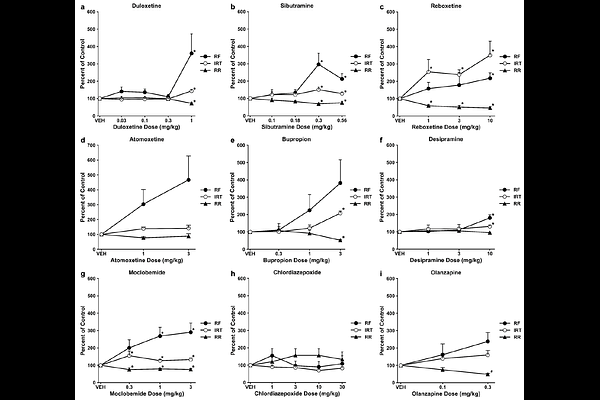Behavioral and Pharmacological Validation of the Differential Reinforcement of Low-Rate Behavior Paradigm in Non-Human Primates

Behavioral and Pharmacological Validation of the Differential Reinforcement of Low-Rate Behavior Paradigm in Non-Human Primates
Vanderlip, C. R.; Dunn, S. R.; Wettstein, J. G.; Vivian, J. A.; Glavis-Bloom, C.
AbstractThe development of novel antidepressants is hindered by limited predictive validity of preclinical models. The Differential Reinforcement of Low-Rate (DRL) task is a classic rodent assay with strong sensitivity to antidepressants, but its translational potential remains unexplored in non-human primates (NHPs). Here, we adapted the DRL task for use in cynomolgus macaques (Macaca fascicularis) and evaluated its pharmacological sensitivity, specificity, and clinical utility across 19 compounds spanning diverse drug classes. Antidepressants, including SSRIs, SNRIs, NRIs, NDRIs, TCAs, MAOIs, and PDE4 inhibitors, consistently improved DRL performance, increasing reinforcers earned and inter-response times while decreasing response rates. In contrast, benzodiazepines, antipsychotics, and psychostimulants without serotonergic or noradrenergic engagement failed to enhance performance. Critically, the primate DRL task identified antidepressant-like efficacy of PDE4 inhibitors, while also capturing emesis, a dose-limiting side effect not observable in rodent models. These findings validate the primate DRL task as a pharmacologically selective and translationally relevant platform for screening novel antidepressant therapies. By modeling core cognitive domains implicated in depression, impulse control and internal timing, this assay offers a unique opportunity to bridge preclinical and clinical development with improved sensitivity to both therapeutic efficacy and tolerability.